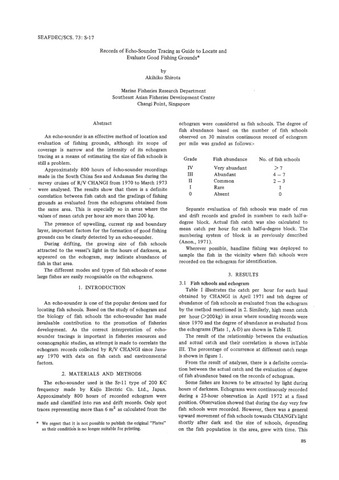Records of echo-sounder tracing as guide to locate and evaluate good fishing grounds
Share
Abstract
An echo-sounder is an effective method of location and evaluation of fishing grounds, although its scope of coverage is narrow and the intensity of its echogram tracing as a means of estimating the size of fish schools is still a problem.
Approximately 800 hours of echo-sounder recordings made in the South China Sea and Andaman Sea during the survey cruises of R/V CHANGI from 1970 to March 1973 were analysed. The results show that there is a definite correlation between fish catch and the gradings of fishing grounds as evaluated from the echograms obtained from the same area. This is especially so in areas where the values of mean catch per hour are more than 200 kg.
The presence of upwelling, current rip and boundary layer, important factors for the formation of good fishing grounds can be clearly detected by an echo-sounder.
During drifting, the growing size of fish schools attracted to the vessel’s light in the hours of darkness, as appeared on the echogram, may indicate abundance of fish in that area.
The different modes and types of fish schools of some large fishes are easily recognisable on the echograms.
Suggested Citation
Shirota, A. (1977). Records of echo-sounder tracing as guide to locate and evaluate good fishing grounds. In Proceedings of the Technical Seminar on South China Sea Fisheries Resources, Bangkok, Thailand, 21-25 May 1973 (pp. 85-88). Tokyo, Japan: Japan International Cooperation Agency.


